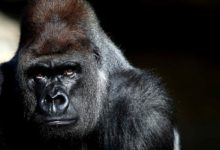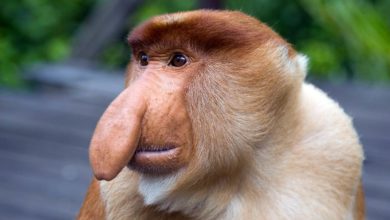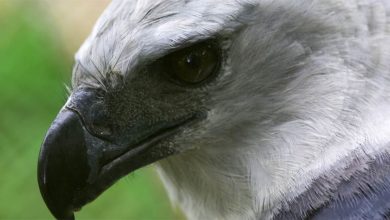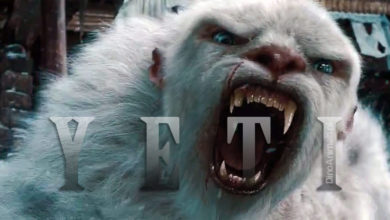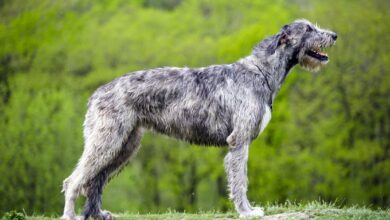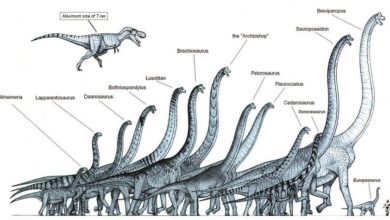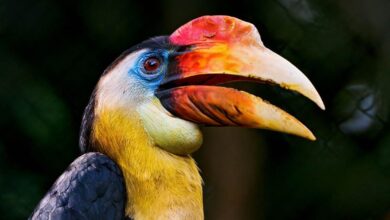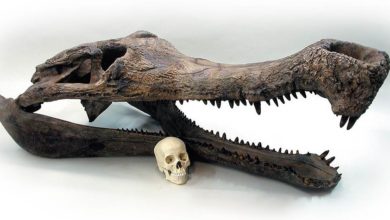Martial eagle (Polemaetus bellicosus)
The martial eagle is one of the largest eagles in the world. Its name evokes a fearless, mighty and even dangerous creature. However, for every Mr Hyde, there is a Dr Jekyll – what is martial eagle’s true nature?
Classification
- Class: Aves
- Order: Accipitriformes
- Family: Accipitridae
- Genus: Polemaetus
- Species: Martial eagle (Polemaetus bellicosus)
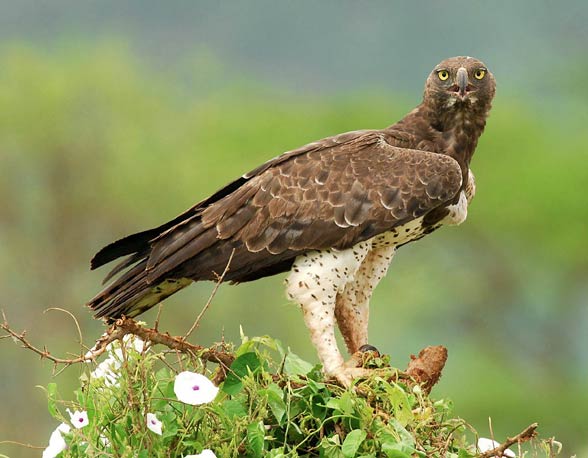
Areas of occurrence
It inhabits almost the whole of sub-Saharan Africa, where the environment is friendly and the food supply is ample. Although it is not a common species, its largest population has chosen the southern parts of this continent for its habitat (especially Zimbabwe and the RSA). The most numerous population of these birds inhabits the Kruger National Park, Kgalandi Transfrontier National Park (in RSA and Botswana border area), and the Etosha National Park (Namibia).
The most comfortable environment for the martial eagle is the edges of woods, open tree formations, savannas and prickly bushes. However it does not appear in the Guinea’s tropical rainforests or the lowland Congo jungle, yet trees remain inextricably woven with its nesting and hunting needs.
In the southern parts of Africa it has adapted to the less wooded habitats: steppes, open savannas, forested hills, poles and other pylons. Anyhow, it usually prefers secluded regions and conservation areas.
It is worth mentioning that it chooses different habitats than the crowned eagle, which prefers forest areas.
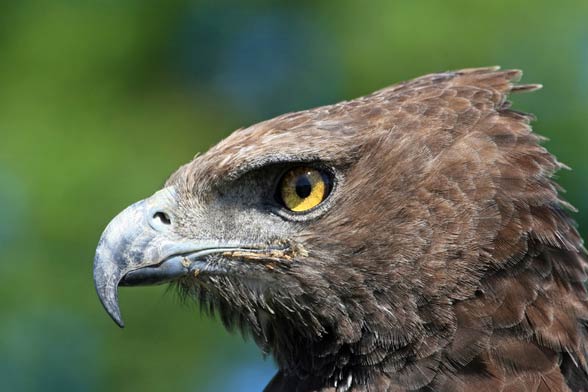
Appearance
Size
The martial eagle is one of the largest eagles in the world, with body length ranging from 78 to 96 cm (31–38 in), weighing 3 – 6.2 kg (6.6–13.7 lb), with a wingspan reaching even 260 cm (8 ft 6 in), larger than golden eagle’s.
Feathering
An adult eagle is covered with dark, grey-brown feathers with bright edges in the dorsal area and its head. The breast, belly and legs remain white, ornamented with black or brownish speckles. Wings have brown bottoms with striped remiges.
Females are usually larger and more colorful than males.
Immature eagles have a brighter coloration, a white head and breast and almost plain bottoms of wings. An adolescent martial eagle needs many years (even 7), to develop an adult coloration.
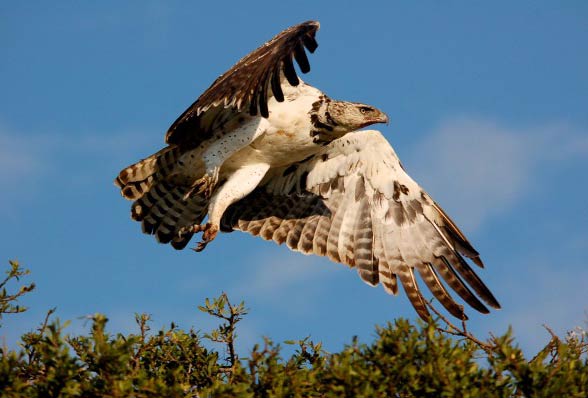
The ‘crown’ formed by several feathers is barely noticeable, as opposed to the strong, splendid beak.
Martial eagle is distinctive for its densely feathered, long and bulky legs equipped with large and sharp talons.
The bird sits on branches in a standing position, its great wings covering the tail completely. This predator is relatively easily distinguished from the black-chested snake eagle (Circaetus pectoralis), being smaller in terms of size and having a more salient head, a bright white belly and less motley flight feathers.
Although the crowned eagle (Stephanoaetus coronatus) also chooses to stand on tree branches instead of sitting on them, its wings are clearly shorter and its tail is longer (it hunts in the woods), whereas its feathering varies to a greater extent between the birds of the same species.
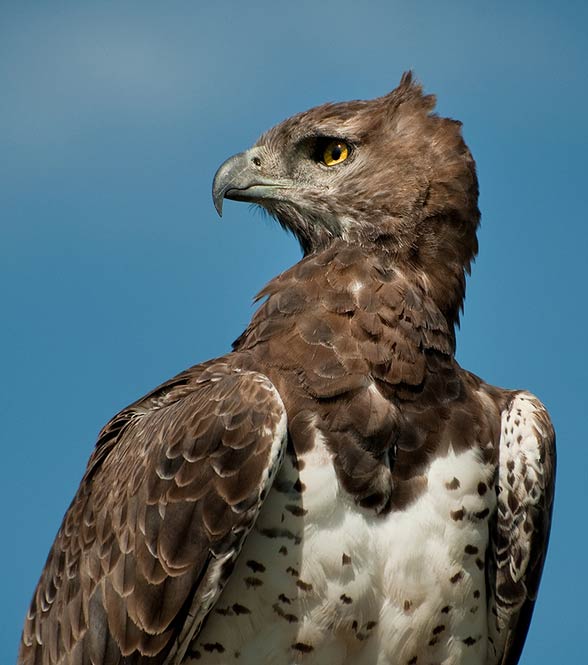
Diet and hunting style
The martial eagle’s name is not unfounded, as it is considered one of the strongest raptors in Africa. Only the crowned eagle has a similar reputation.
Being an apex predator, it does not have to fear other animals’ attacks, as it does not have any natural enemies. Despite occasional overlapping of the crowned eagle’s and martial eagle’s territories, the crowned eagle prefers more densely wooded areas, contrary to the martial eagle usually choosing savannas, which is why a direct rivalry between those two species is extremely rare.
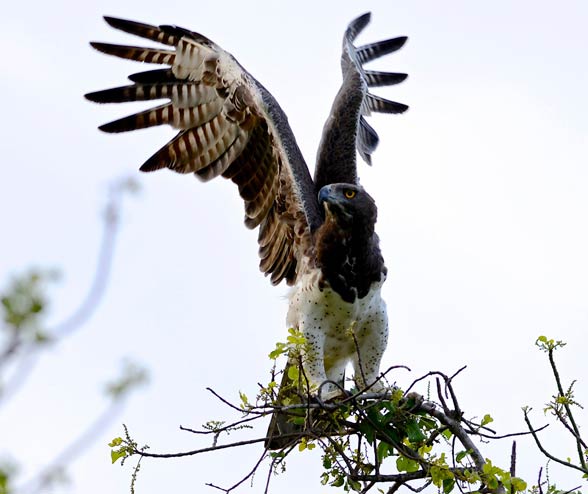
Diet
Its menu depends on the available food, so its dietary habits are dictated by the population of given prey. Based on the observation of Kruger National Park eagles it has been estimated that other birds account for up to 45% of these eagles’ diet, especially landfowl (Galliformes), Egyptian goose (Alopochen aegyptiacus) as well as francolins (Francolinus), guineafowl (Numididae) and bustards (Otidiformes).
It also hunts for reptiles e.g. monitor lizards and snakes: Cape cobra (Naja nivea), boomslangs (Dispholidus typus), puff adders (Bitis arietans), green mamba (Dendroaspis viridis), or even small black mambas (Dendroaspis polylepis) and African rock pythons (Python sebae).
About 38% of their diet consists of reptiles, and 17% mammals, including predatory mammals.

However in some regions, the majority of martial eagles’ diet consists of mammals: hyraxes (Hyracoidea), mongooses (Herpestidae), rats (Rattus), Pedetidae family rodents; the eagle can also hunt for a larger prey: Caracals (Caracal caracal), servals (Leptailurus serval), black-backed jackal (Canis mesomelas), young impalas (Aepyceros melampus) and other small antelopes.
It usually hunts mid-flight, gliding high above its territory. The moment it spots its prey (as far as 3 – 5 km away!), it attacks catching the victim unawares. Sometimes it awaits its victim on a high branch or camouflages itself in dense flora near water reservoirs.
Normally it kills its prey on the ground or on a tree, yet there are records of killing animals in the air.
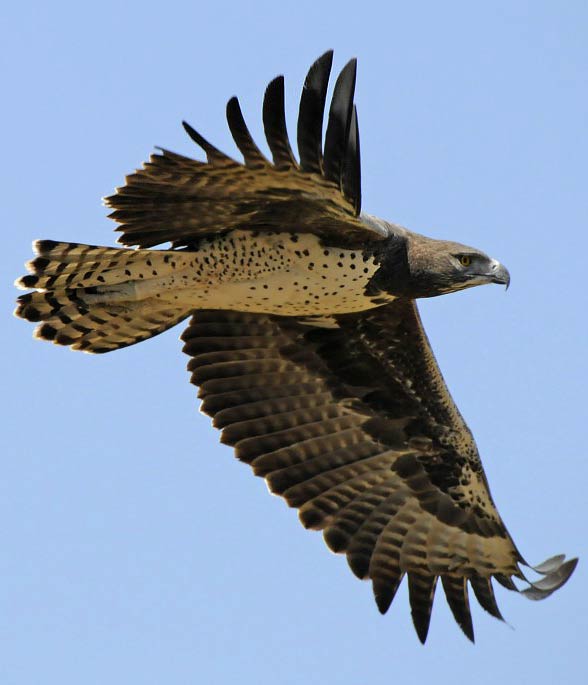
Breeding
Depending on the inhabited region the martial eagle reproduces in various season of the year: in Senegal the breeding season lasts from November to April, in Sudan from January to June, in north-east Africa from August to July, whereas in Eastern Africa the eagles may reproduce all year long, yet it mostly happens between April and November.
Mating
Those birds do not perform any aerial stunts in the mating process, males simply circle above their territory in a gentle, tame manner, rarely joined by the desired female.
In the hatching season those birds, however customarily quiet, tend to cry loudly.
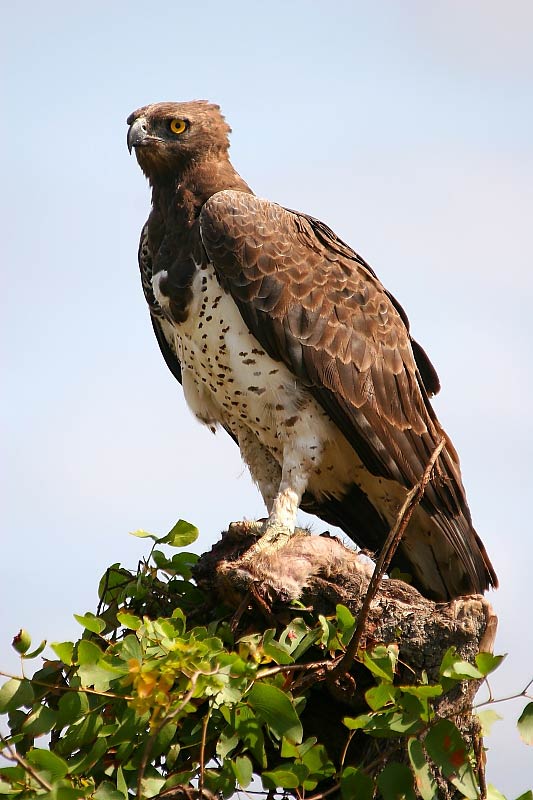
Nest
After the mating process is finished, the eagle pair builds a nest in the high tree canopies, often placing it in the branch bifurcations, 6 – 20 m above ground, though there are records of nests built between 5 – 70 m above ground, which is practically the top of the tree.
Martial eagle prefers trees growing on the rocky slopes, valleys or hilltops; a nest inside the cave was found only once. The nest itself is an enormous structure made of twigs, reaching 120 – 150 cm (3.9 – 4.9 ft) in diameter and 60 cm (2 ft) of depth.
Nest after multiple years of use and reinforcing may be even 2 meters wide (in diameter) and equally deep.
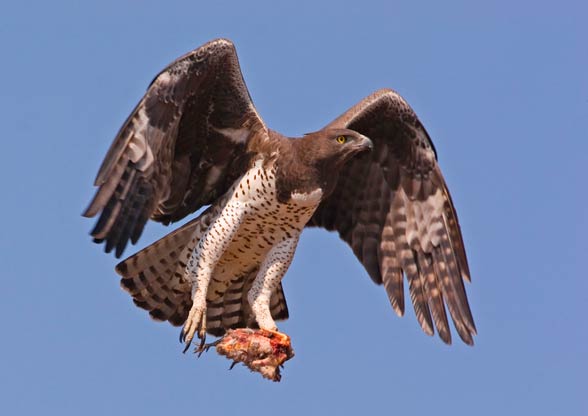
Martial eagle’s reproduction is not very frequent, as only one egg (rarely 2) appears in a single hatch, which in addition happens once every two years (which is rather typical for birds of prey).
Incubation lasts from 45 to 53 days, the chick grows feathers after 96 – 104 days after hatching.
Despite a relatively quick process of gaining independence (individual flights, hunting education), an adolescent eagle remains under parental supervision for the next 6 or even 12 months.
A lengthy upbringing period is one of the main reasons for major intervals in breeding.
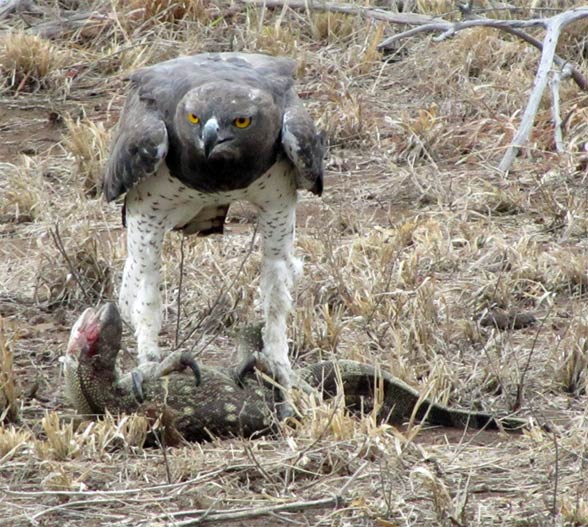
Detailed characteristic / size
Martial eagle (Polemaetus bellicosus)
- Length: 78 – 96 cm (31–38 in)
- Wingspan: 188 – 260 cm (6 ft 2 in–8 ft 6 in)
- Wing length: 56 – 67.5 cm (22.0–26.6 in)
- Tail length: 27.2 – 32 cm (10.7–12.6 in)
- Tarsus length: 9.7 – 13 cm (3.8–5.1 in)
- Beak length: 5.5 cm (2.2 in)
- Weight: 3 – 6.2 kg (6.6–13.7 lb)
Females are larger and have a slightly more colorful feathering than males.
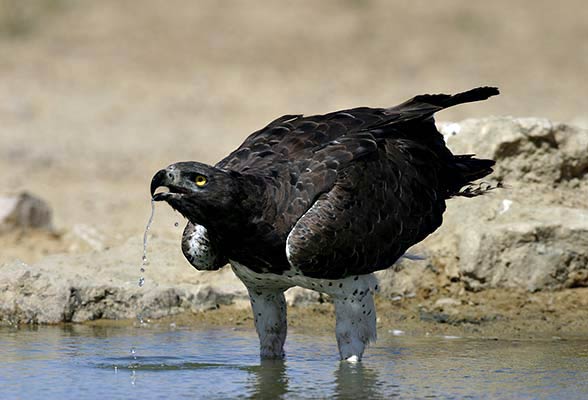
Martial eagle – interesting facts
- The martial eagle is one of the largest eagles in Africa and the fifth heaviest eagle in the world.
- It is strong enough to tackle an adult human.
- These birds are characteristic for their enormous individual territories, which sometimes reaches 1000 km2 (386 mi²).
- Compared to other African eagles, the martial eagle is more often observed flying.
- It has an outstanding vision, over 3 times sharper than the human eye.
- Martial eagle can also hunt for kori bustards (Ardeotis kori), considered the largest present-day flying birds.
- In the Karru geographical region (South Africa) martial eagles sometimes make nests on the transmitting towers.
- This species has been classified as near threatened, due to loss of habitats, poisoning, contamination, as well as results of electric shocks, and a low reproductive rate.
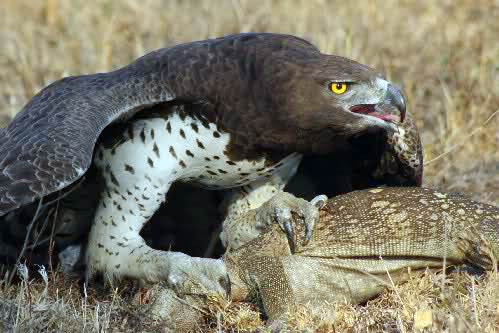
Recommended
- Animals records
- Largest eagles Top10
- Largest birds of prey
- Haast’s eagle
- Bald eagle
- Steller’s sea eagle
- Philippine eagle
- Crowned eagle
- Wedge-tailed eagle
- Fastest animals – Top 10
- Fastest birds – Top 10
- Most venomous snakes – Top 10
- Largest sharks Top 10
- Heaviest land animals
- Largest crocodiles Top 10
- Largest whales TOP 10
- Longest snakes Top 10
- Highest (Top) flying bird – Top 10
- Largest and heaviest birds
- Largest turtles TOP 10



